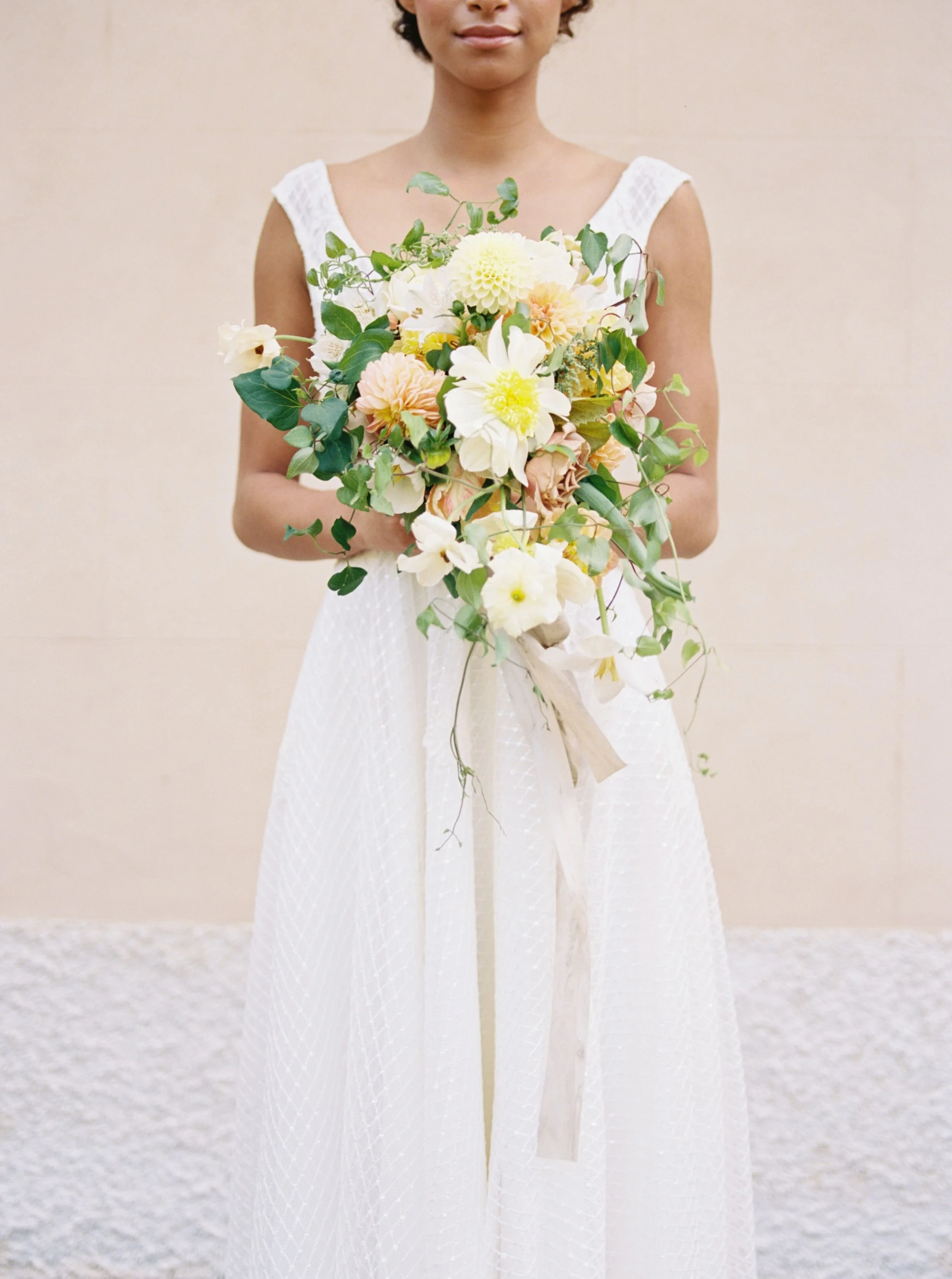It all started with a spur-of-the-moment decision to read Manzoni’s The Betrothed when I had an inkling that my now-husband was about to propose a year and a half ago.
For some reason, that decision led to my reading one novel about marriage after another — George Eliot’s Middlemarch and Sigrid Undset’s Kristin Lavransdatter followed in close succession.
I’m not sure why I read these novels over the past year, because though the theme of engagement and marriage persists through them all, there was no real intentionality to my choices. And yet, the fact that there was that loose theme all along has caused me to ask — what can one learn from reading novels depicting the joys and sorrows of engaged and married life?
I’m not going to walk you through a philosophical argument to answer this question (though, as a philosophy PhD, it’s always tempting to do so). Instead, I think an answer emerges for me — and perhaps it will for you too — in reminiscing about these novels and the reflections on engaged and married virtues that they’ve inspired.
I hope that, in the reminiscing, it will emerge why novels and books describing marriage are indispensable, especially for young brides.
For what’s better than peering through the looking glass of literature or history, either to grow in self-knowledge or to fill in the gaps of what one doesn’t know all that well?
The Betrothed by Alexander Manzoni
From The Betrothed, I considered what faithfulness and constancy look like in adventures and in the mundane.
I began reading this novel the same summer that my husband and I got engaged. Not only did it turn out to be eerily prophetic of our own summer 2020 wedding experience (never again will I think of a plague as a remote possibility), the love story of the reckless, but endearing Renzo and his pious, kind Lucia proved to be a early reflection on how a couple in love can remain faithful and even joyful in facing inevitable trials.
Lucia and Renzo are apart for most of the novel, separated and hunted by the evil Don Rodrigo who desires Lucia for his own. Yet, miraculously, the couple remains committed to each other through the protection and prayers of their family (Lucia’s mother Agnese) and good spiritual fathers (Fra Cristoforo and Cardinal Federigo). This fidelity is practiced not only amid the fantastical journey leading up to their marriage, but also in the travails of so-called “normal” life after their marriage.
The novel ends with a surprising reflection on how unremarkable Lucia and Renzo are, especially Lucia—she is not beautiful, and when they settle down in their village once more, the townspeople begin to wonder why Renzo sacrificed so much for her. But this unremarkability of the couple and their mundane life after marriage contain the same temptations, passions, joys, and sorrows of their adventures.
Fidelity is needed even here when the prosaic sets in:
“After discussing the question and casting around together a long time for a solution, they came to the conclusion that troubles often come to those who bring them on themselves, but that not even the most cautions and innocent behavior can ward them off; and that when they come – whether by our own fault or not – confidence in God can lighten them and turn them to our own improvement.”
For us Christians, we are called to be faithful and to grow in virtue no matter the circumstance.
Middlemarch by George Eliot
From Middlemarch by George Eliot, I witnessed what happens to a marriage when there is a deficiency of humility and self-knowledge.
The story of Dorothea and Causabon is admittedly far more depressing than that of Renzo and Lucia. It serves as a cautionary tale as much about marriage as it is about knowing oneself prior to marriage.
Dorothea is too idealistic before she weds Causabon—she thinks only of using him as a way of entering into a world of intellectual riches she admires but has not been able to enjoy. Her loveless marriage is entirely a creation of her own decision and self-deception.
While she remains faithful to him, she reaps the consequences of her choice even after Causabon’s sudden death when her inheritance depends on never marrying anyone else, most especially Causabon’s nephew, the vivacious Will Ladislaw. While the choice to be faithful to one person in a lifelong marriage is always a leap of faith, the events of Middlemarch remind one of the role that our interior blindness and flaws play in any bad decision, whether or not within marriage.
Dorothea exhibits the fatal flaw of hubris early on — she refuses to listen to her sister Celia, who is more terrestrial than Dorothea but who knows her best, about Causabon’s boring and selfish behavior; she does not listen to her uncle, Mr. Brooke, who is aware of Causabon’s middling intellect and myopic behavior better than she is; and she does not allow herself time to see if Casuabon’s faults are forgivable flaws or deeply embedded selfish habits.
The happy ending of Middlemarch is attained after Dorothea blossoms in wisdom, self-knowledge, and humility, but only once she has undergone extreme suffering because of her pride and renounces the fortune Causabon left her. Having dispersed with all the vestiges of her former folly, she finds happiness in her second marriage to Ladislaw, who exhibits both a care for her and a melding of intellectual and practical pursuits which Dorothea had desired all along.
Humility and self-knowledge, even if they have been previously lacking in a relationship, blossom when the counsel of others and the proper time for a relationship to flourish is treasured.
Kristin Lavransdatter by Sigrid Undset
From Kristin Lavransdatter, I thought about the necessity of ever-ready forgiveness for a marriage.
The entire trilogy spanning the length of Kristin Lavransdatter’s life is a heartbreaking story of a marriage begun in less-than-ideal circumstances. But, it’s not as bleak as Middlemarch—there are significant moments of grace in spite of Kristin’s impassioned choice for the imprudent, unfaithful Ereland over her steadfast betrothed and the choice of her family, Simon Darre.
As I followed Kristin as she reaped the sufferings that came with her choice to marry Ereland, I was struck by the fact that the hardships in Ereland and Kristin’s marriage not only came from personal flaws, but also from Kristin’s inability to forgive Ereland for past wrongs. She herself admits as much to Ereland’s priest brother Gunnulf: “Disobedience is my gravest sin, Gunnulf, and I was inconstant too . . . [Ereland] never became what you said or what I myself became. He never held on to anger or injustice any more than he held on to anything else.”
What Kristin forgets for much of her marriage and remembers only at the end of her life when she devotes herself entirely to God, is the continual need for conversion, forgiveness, and re-consecration of spouses to Christ within a marriage.
At various points in her marriage, Kristin’s relationship with God and the Church ebbs and flows; her greatest obstacle to happiness is often her own stubbornness. In this way, Kristin Lavransdatter is as hopeful as The Betrothed: no matter what wickedness Kirstin and Ereland commit together or towards one another, the grace of God is continually working to soften Kristin and Ereland’s hearts, if they will accept.
As Kristin’s spiritual guide, Sira Eiliv, reminds her near the end of her life:
“Haven’t you realized yet, sister, that God has helped you each time you prayed, even when you prayed with half a heart or with little faith, and He gave you much more than you asked for.”
In engagement and marriage, God molds us in spite of our stubbornness and asks that we forgive those closest to us, again and again, as He forgives us.
Each of these novels, in their own way, inspired extended reflections on virtues necessary for engaged and married life: faithfulness, humility, self-knowledge, and forgiveness.
And, of course, the presentation of these virtues led to conversations with my husband about the intricacies of each one and inward reflections on whether or not I exhibited such virtues in our relationship (spoiler: still working on them).
I can’t say if I will continue to pursue this theme I’ve stumbled upon; but, what I can say is that, if you’re engaged, newlywed, or married, depictions of marriage in literature can offer incredibly complex and fruitful insights into what marriage is, what it is not, what it can be, and what it cannot be.
Most of the time, those insights do not come from ourselves (we deceive ourselves too easily, much like Dorothea), but from another wiser, enticing, and occasionally brutally honest source — the novelist.


































